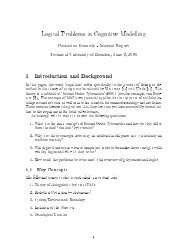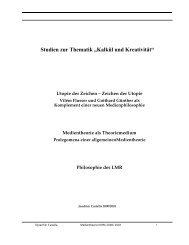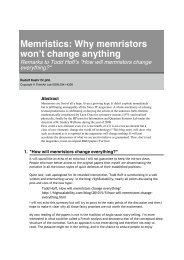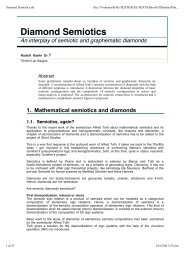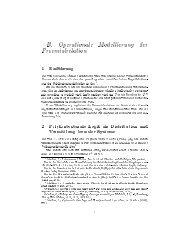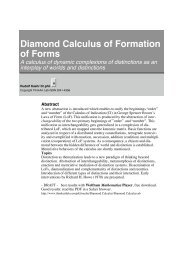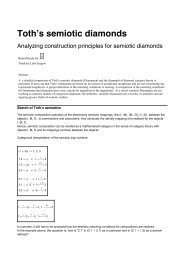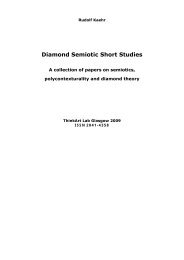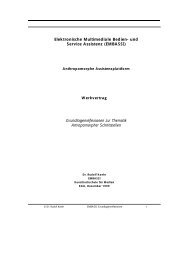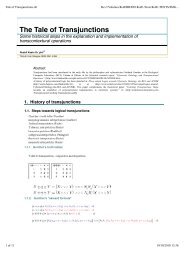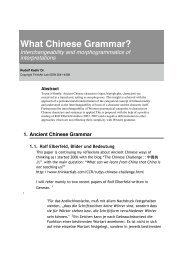Catching Transjunctions - ThinkArt Lab!
Catching Transjunctions - ThinkArt Lab!
Catching Transjunctions - ThinkArt Lab!
You also want an ePaper? Increase the reach of your titles
YUMPU automatically turns print PDFs into web optimized ePapers that Google loves.
<strong>Catching</strong> <strong>Transjunctions</strong>.nb<br />
file:///Volumes/KAEHR/HD-KAE-Texte/KAE-TEXTS/Publi...<br />
states of input memristors.<br />
In (a) we also show an example of voltages applied to the drivers to generate the top voltage<br />
plot. The voltages on the drivers in (a) are in absolute values while the other curves were<br />
vertically displaced for clarity.”<br />
Yuriy V. Pershin and Massimiliano Di Ventra, Neuromorphic, Digital and Quantum Computation<br />
with Memory Circuit Elements<br />
The simulation runs with 3 memristors, 1 memcapacitor and 1 resistor. If two memristors are<br />
enough to simulate logical function, a distribution of logical functions over 3 contextures needs<br />
therefore not more than 9 memristors. But with 9 memristors only separated and not mediated<br />
logical functions could be simulated in their specific domain. Additionally to the definition and<br />
realization of 3 different domains, which will be represented by different voltage-domains, at<br />
least 3x2 additional memristors are demanded to realize the mediation (connection) between<br />
the 3x3 distributed memristors.<br />
2.2.2. Mediation of memristors<br />
Types of combinations of memristors<br />
Classical combinations: serial and parallel,<br />
Transclassical combinations: mediations, i.e. interactional, reflectional and interventional<br />
mediations.<br />
How are mediator defined<br />
In more abstract terms, mediators are realizing the matching conditions for the composition of<br />
morphisms (functions, operations).<br />
MEM are memristors with an intra-contextural selective switch-function, basic for the<br />
emulation of logical and arithmetical operations. In contrast, the role of memristor MEM is an 3<br />
elective trans-contextural function, realizing the functor ‘mediation' ( ).<br />
funct(MEM) = (election, selection)<br />
selection = [ON/OFF] for digital and [ON,..., OFF] for analog operations in a<br />
contexture,<br />
election = switch of contextures in the mode of transpositions, reflections and<br />
interventions.<br />
Selection is realized by the first-order functionality of memristors in a crossbar system,<br />
Election is realized by the second-order functionality of memristors between different crossbar<br />
systems.<br />
First-order states of a memristive configuration are defining the type of primary action, i.e.<br />
logical junctions and basic arithmetic operations.<br />
Second-order states of a memristive configuration are states of states, memorizing the<br />
first-order states of precessing states and as a new functionality, the context of those first-order<br />
states. Because states are always realized in a context, the memorization function of the state<br />
of the state delivers both, the former first-order state and its context (contexture).<br />
"Because of the graphematical tabularity of ConTextures there are not only two possibilities to<br />
perform a selection. For each contexture there are intra-contexturally only two possibilities to<br />
perform a selection. But between contextures, transcontexturally, there are as many new<br />
selectors as neighbor contextures. These new "selectors" should be called electors. Electors are<br />
12 of 26 15/10/2010 19:01



